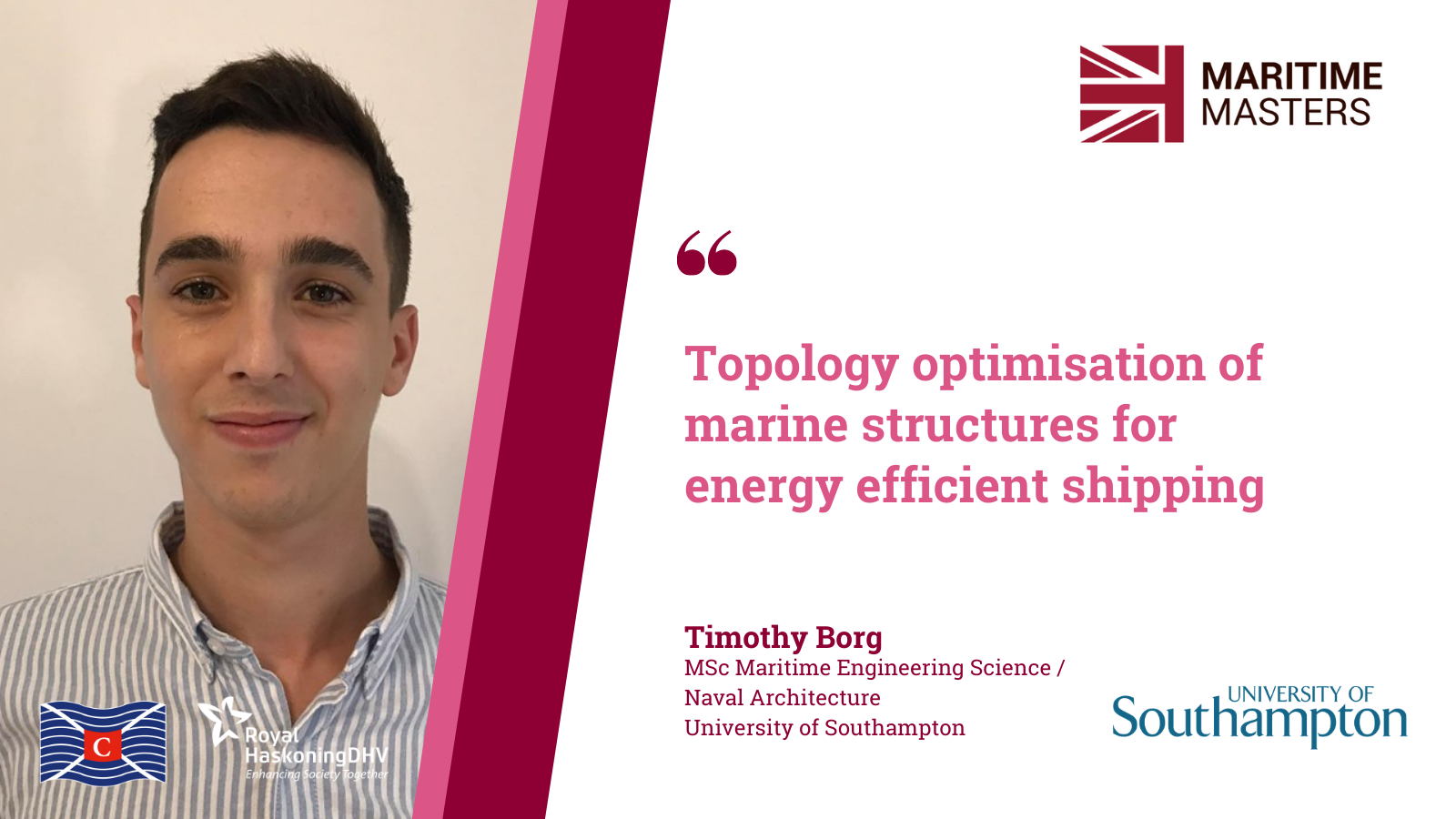Timothy Borg

Biography:
My name is Timothy Borg and I am 22 years old. I completed my Bachelor’s degree in Mechanical Engineering at the University of Malta in 2019 where in my third and fourth year of studies, I decided to focus on maritime related subjects as well as write a maritime related dissertation. I then decided to further my studies in the maritime field, and found that the University of Southampton offered exactly what I was looking for, an MSc in Maritime Engineering Science with a focus on Naval Architecture.
Admittedly, a commitment to a future in the maritime field only became a desire to me during my maritime related studies, although being raised in Malta, surrounded by the sea, I always had an underlying interest in marine activities, which I now have a deeper appreciation for.
Introduction to research:
The marine industry is heavily reliant on platforms and ships to carry out operations such as the extraction of oil, transfer of goods and passengers, geological surveying and several other operations which will overall result in profit or development in research. Such ships and platforms must be reinforced with a well-designed structure to reduce the risk of structural failure as a result of various undesirable conditions, such as harsh weather, incorrect loading and inappropriate design. Despite the fact that shipping is an asset to the economy, it significantly contributes to the pollution of our environment.
It comes as no surprise then that those involved in the maritime industry are actively seeking solutions to feasibly improve the energy efficiency without having to do so at the expense of the ship’s economic value. Ship structural optimisation is one such solution which may lead to better transport and energy efficiency by reducing the total lightweight displacement through the introduction of lightweight structures.
Naval architects are faced with the task of potentially pioneering the way forward to achieve lightweight and reliable ship structures with the aim of fulfilling the need for improved energy efficiency. Class societies set the standard for marine structure construction in ships, but only provide minimum strength requirements, leaving one questioning how far the standards may be tweaked whilst still being considered sufficient. Whilst it is more common approach to perform scantling optimisations in ship structures, the scope of the project is to investigate the possibility of the topology of marine structures being optimised to reduce the structural weight whilst still being considered safe to achieve improved energy efficiency and lower material costs.
What is your interest in or the practical applications of this research?
My research project is focussed on improving existing designs of ship structures by investigating the possibility of using topology optimisation. This research is useful because it provides a novel solution to structural weight reduction in ships besides the more common practice of scantling size optimisations. A structural weight reduction translates to improved energy and transport efficiency by allowing for an increase in deadweight capacity. This research mostly focusses on the structures of large ships, since it is large ships such as bulk carriers and oil tankers which are speeding up and thus polluting more. However, the method may also apply to relatively smaller ships such as offshore supply vessels which also carry payloads.
Why did you choose maritime as your area of study and research?
I started my engineering studies without knowing what career path I would choose further on. In my third year of undergraduate studies, I decided to select ‘Naval Architecture’ as one of my elective study units. After thoroughly enjoying studying the unit, and achieving good a good mark in my assessment, I decided to further focus on maritime related studies in my fourth year at the University of Malta. My undergraduate thesis was also marine related, further supporting my choices of subjects. Near the end of my undergraduate studies, I began to develop a deeper appreciation for the maritime industry, so much so that I decided to undertake the MSc Maritime Engineering Science / Naval Architecture programme at the University of Southampton.
I chose maritime as my area of study and research because since first studying naval architecture, I started to develop a deep interest in how ships and platforms are able to function whilst being subject to harsh conditions. I also began to fully appreciate how much of an asset ships and platforms are to the economy, and would therefore be honoured to contribute and to be part of the industry.
